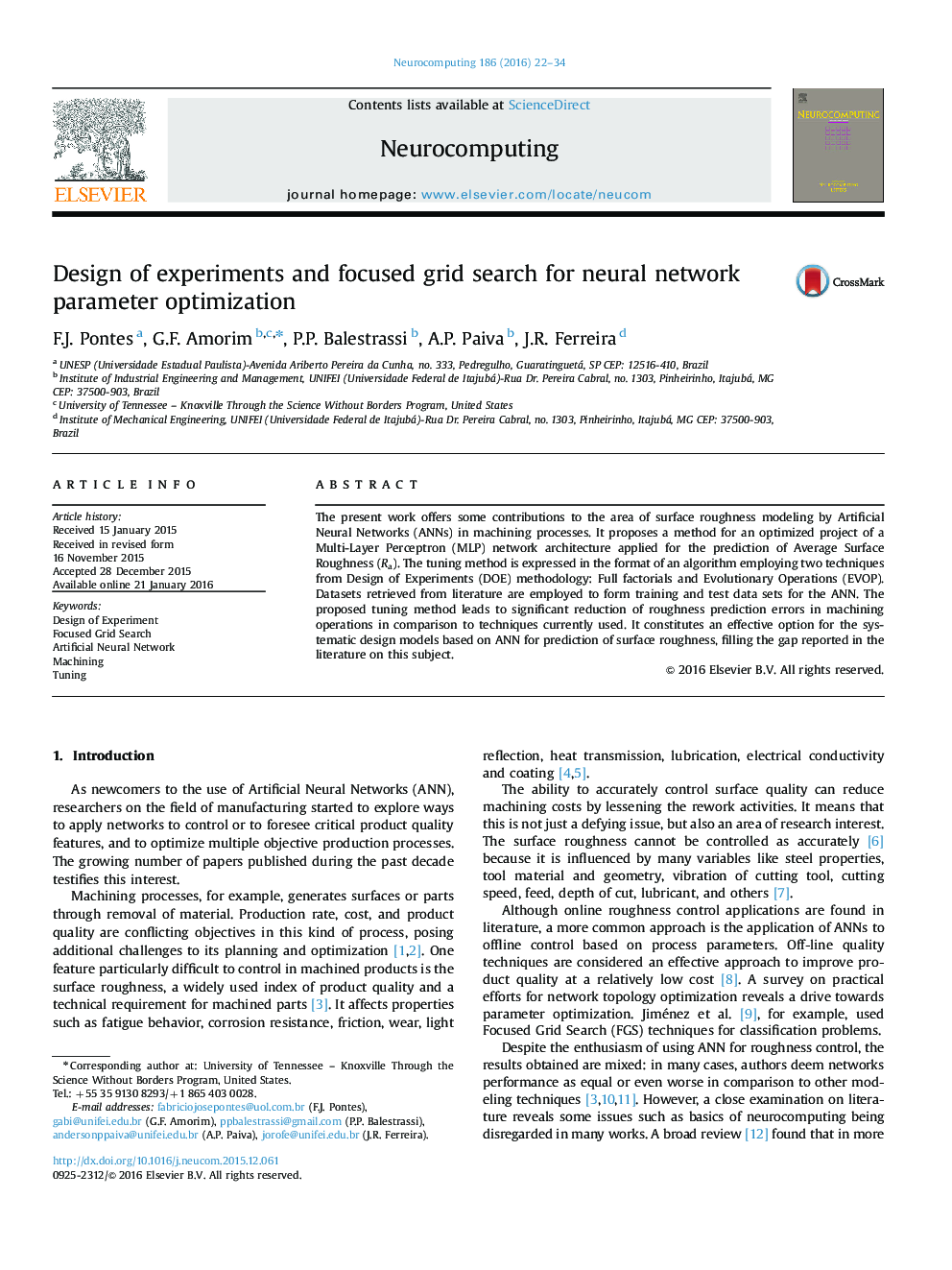| Article ID | Journal | Published Year | Pages | File Type |
|---|---|---|---|---|
| 408409 | Neurocomputing | 2016 | 13 Pages |
•We propose a systematic approach to design and optimize MLP networks.•We used DOE, Evolutionary Operation and Focused Grid Search for optimization.•The proposed method is compared to previous studies in machining applications.•The method presents superior results for all the comparisons.
The present work offers some contributions to the area of surface roughness modeling by Artificial Neural Networks (ANNs) in machining processes. It proposes a method for an optimized project of a Multi-Layer Perceptron (MLP) network architecture applied for the prediction of Average Surface Roughness (Ra). The tuning method is expressed in the format of an algorithm employing two techniques from Design of Experiments (DOE) methodology: Full factorials and Evolutionary Operations (EVOP). Datasets retrieved from literature are employed to form training and test data sets for the ANN. The proposed tuning method leads to significant reduction of roughness prediction errors in machining operations in comparison to techniques currently used. It constitutes an effective option for the systematic design models based on ANN for prediction of surface roughness, filling the gap reported in the literature on this subject.
